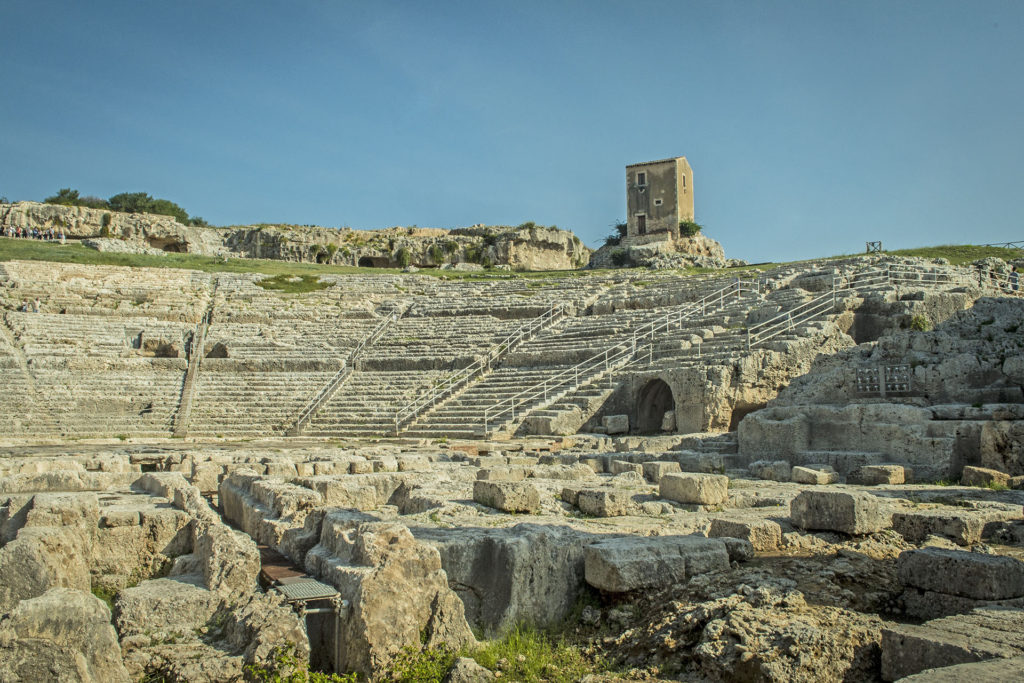The secret of acoustics in Greek theatres can be traced back to their semi-circular shape, which helps to “hold” sound. Great importance is also attributed to the steps and their slope: the stone suitably inclined structures act like acoustic filters.
Thanks to the stone steps, it was possible to reduce the low frequencies that disturbed the audience’s ability to listen and accentuate, on the other hand, the more acute sounds such as actors’ voices or musical instruments.
 Also well known in theatrical performances were the artifices used to create acoustic and visual “special effects”.
Also well known in theatrical performances were the artifices used to create acoustic and visual “special effects”.
One of the most famous scenic machines, the bronteion, was used to reproduce the sound of thunder in scenes of strong dramatic pathos, such as the apparition of an angry deity or a disastrous event, and was made up of leather sacks filled with stones that were thrown into metal containers, perhaps made of brass, thus emitting a loud “rumble”.